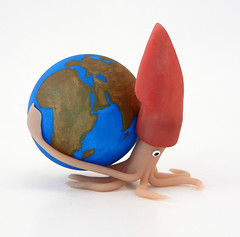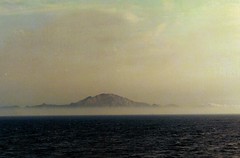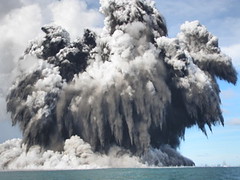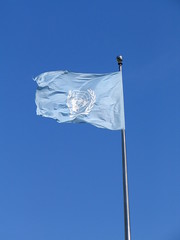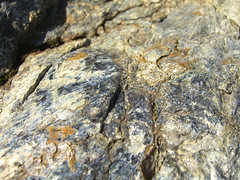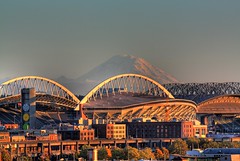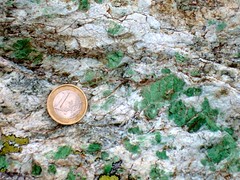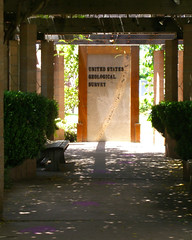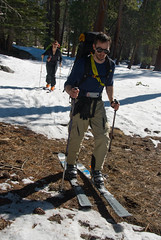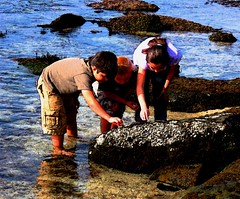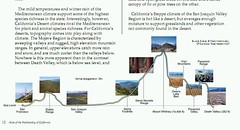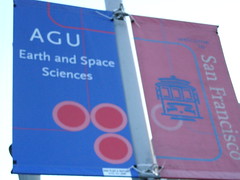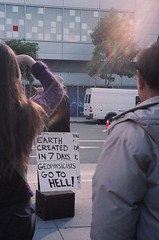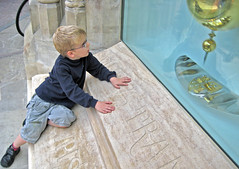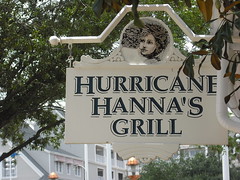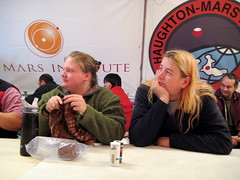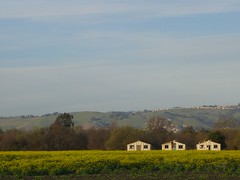Friday, April 24, 2009
satellite alphabet
Designer (creative director) Rhett Dashwood poked around on google maps for Victoria, Australia, and came up with an entire alphabet. I thumbnailed it for blogging, but am leaving you to go see the big version on his own website.
I need to take a little time and do one of these on my own. What fun.
The original page and much bigger image are right here at rhettdashwood.com.au.
Wednesday, April 22, 2009
Tuesday, April 21, 2009
Get outside! But come back and tell us what you saw.
Wildobs lets you upload the location of wildlife you find around North America (at least) with details about habitat, and mapped locations. I am going to explore the area near where I live, find out what's around at this time of year that I haven't yet noticed, and go look. It's a perfect "get outdoors now!" computer toy. (There's an associated iphone app, too. I don't see anything for my Treo yet.)
Monday, April 20, 2009
fussing about the weather
The thing is, only houses built since the mid-70s routinely have insulation, and far fewer than that have air-conditioning. Our house has no insulation at all, and despite having a patio on the south side and small windows on the west side, we can spend much of a warm day 5ive to ten degrees hotter indoors than outdoors. We start the day, on days like this, with fans at about 6 am. When the air blowing in goes from neutral to warm, we shut off fans, close windows, close up the master bedroom with the tiny in-room a/c unit, and hang out together in the one room. On a 95 degree day, that bedroom can be kept at about 80, while the hallway will be 86 or so, and the rest of the house at 90-100.
The blessing is that it's not humid. One of my most miserable days was in June 2006, in Boston, when it was 100F outside, 90% humidity. And just as a warning: There's nothing worse than smelling the tar decks of the USS Constitution on a day like that, then going to a kosher deli/restaurant and watching a waiter carry a pile of wiggly gravy-covered meat loaf past your table.
But I digress.
Here, it's about 93F right now, but humidity is in the mid-20s. It's starting to feel cooler outside than inside so I've reopened the house and turned the fans back on. I'm lying around, typing and sweating, with an ice pack between me and the laptop. It's not so bad.
We look moderate on paper partially because though we have days like today, the forecast for Friday is in the high 50s with a chance of rain, and just this time last week, I took this little video 20 miles from here, on a chilly afternoon.
(Photo was taken in San Francisco yesterday. It's possible the sensor was in the sun.)
Sunday, April 19, 2009
California's new Geospatial Information Officer explains what the GIO office is for.
On April 14, Michael Byrne, the new GIO for the State of California, explained the duties of the GIO office, and his position.
It seems like the right move, now, with so much of what happens in California facilitated by mapping and aerial photography, to integrate agencies and services with shared GIS directions and resources.
In which I share a little of my life
I love google. I love knowing where to find information. And I can't not know some things. This then comes back to my obsession
I had this instant-message conversation, just this morning:
(11:09:33 AM) Me: Casey asked me if the strait of gilbraltar were closing or opening -- I didn't know for sure.
(11:09:42 AM) Kimberly: : heh, no clue
(11:10:01 AM) Me: So now: Would you like to know about the geology of northern africa and the african/eurasian plate boundary? I had to find out.
(11:11:02 AM) Kimberly: : of course I would like to know!
(11:20:10 AM) Me: *grin* The African plate is moving north pretty fast, but most of the compression is happening in (causing, in fact) the Atlas Mountains, not closing the straits.
(11:20:49 AM) Me: The straits gradually opened from about 25 million years ago to 5 myo, but have been slowly, slowly closing since, with most of the compression happening elsewhere in the mediterranean, local N. African mountains, and 45% of it in the Atlas Mountains.
(11:21:43 AM) Me: I said to Casey, "You knew I couldn't not know, once I realized I didn't know." Casey said, "I know. It means I don't have to do my own research."
(11:21:52 AM) Kimberly: : lol
I'm sure some of the information is vague and/or inaccurate, and I certainly provide no citations. It was based on 15 minutes of reading from links I found via google. But still: This is how my life often goes.
Wednesday, April 08, 2009
Witnessing for ... Geohovah?
I used to know someone who kept a stack of books -- KJV (which he'd read through, and studied), probably the Jerusalem Bible, books on Paganism, the Book of Mormon, Buddhist texts, all sorts of things -- in a stack on the table next to the front door. He was an obsessive reader of psychology and theology, and every time something caught his eye at a book sale, he'd bring it home, and devour it. When folks wanted to come in and talk religion, he could do that, and did, and would sit them down for an hour or more to discuss things they weren't always ready to discuss. He'd pick up his books and leaf through until he found a relevant passage, read it, and bring it into the conversation. The proselytizers never managed to convert him from basic agnosticism, but it passed the time for him, and he liked meeting new people.
If this Geohovah's Witness guy showed up at my door, I'd take him to my special geography table and show him my atlases, geography texts, books about water policy and fire control in chaparral and bird identification and food politics in developing nations and plate tectonics and biodiversity, and of course, offer him coffee and cookies and we'd chat.
I must sound like him sometimes. I can't drive down Mission Bl. through Hayward, in California, without pointing out the Hayward Fault scarp. I can't be along the marine terraces of Highway 1 without explaining how they were formed. I especially can't see serpentine soil (or serpentinite) without getting into a discussion about its formation and ecology.
Water towers in Alameda County -- the kinds that used to sit in back yards, and hold water pumped up from the ground with windmills, for the households -- fascinate me endlessly. Can I control my urge to tell people about them, if they don't already know? No, not really.
I am a geography evangelist. I think I must annoy my friends sometimes. They say they don't mind, but I wonder.
(This sounds like I don't get the point of the video. I do, it just got me musing.)
Tuesday, April 07, 2009
zappos - the map
This isn't meant to be a Zappos ad, I like the company but don't have any vested interest in them at all, and am not any sort of shoe-diva. I am just in love with that map, the concept, the execution, the sheer for-the-sake-of-it goodness.
Friday, April 03, 2009
highly perfect basal cleavage
Wednesday, April 01, 2009
Basic map stuff - How colors are used
Years ago, in physical geography, we had to color in a physiographic map of the United States. I loved that activity, with colored pencils, and thin pens, and geology references. The teacher told us that we could choose our own colors, and one student showed him her map with the sea colored orange. He said, "I know I told you that you can choose your own colors . . . but just no. No. The sea cannot be orange." And he had her start over. It was sad, but . . . just no.
Sunday, March 29, 2009
lightning at Redoubt Volcano
Instead, I'll just give you this, a whole set of Redoubt photos, most showing the eruption, and a few, like this, with dramatic lightning.
I wouldn't mind watching this, with protection from the ash, and some distance.
Wow.
I did not take this photo, it comes from the Alaska Volcano Observatory.
Wednesday, March 25, 2009
Me and California
This is a big, flat map without most labels, and I had to wander around it and talk about it, and tell my companion about the White Mountains and the Bristlecone Pines, and (here) the various drainages of the Feather River, and about the Sutter Buttes and how they're a tiny mountain range, and we had to find the original Brokeoff Mountain remnants around Mount Lassen, and I could have stayed and looked at it for another thirty minutes or so.
I want this for my house. Is that too much to ask?
It's near the climate change exhibit at the California Academy of Sciences in Golden Gate Park. Go check it out. Say hi for me.
"Daylight Savings brings back Rose, the two o'clock titty."
(quickie, sorry -- off to do naturey things, more substantive post tonight)
(and yes, shadows cast on the earth by the sun are pure geography)
Friday, March 20, 2009
Behold: The Ice Worm
Mind you, these are just the ice worm. We'll also lose alpine plants and animals that have migrated to as high and cool as they can go or as dry as they can go, water storage in snowpack and glaciers, riverflow, and some existing air circulation patterns. More will be revealed. We shall see, we shall see.
Thursday, March 19, 2009
Tonga's doing a little remodeling
I love the shapes and drama of the black, white, and grey of the ash, steam, and other ejecta.
Boston.com's The Big Picture has some pictures that made my heart pound. I actually made a squeak when I saw #10.
There's no real evidence at this point that the volcano is related to today's quake, and it almost certainly isn't.
.
I love this planet. This is an awesome planet.
Monday, March 16, 2009
Sunday, March 15, 2009
totally random find while stumbling around in slow motion videos on youtube
Holy cow this is amazing lightning video! The annotations label the various leaders.
I grew up in a part of California that has summer lightning storms, but even those amazing storms weren't like storms can be in other parts of the US and the world. Lightning still enthralls me, rather than scaring me.
I sat through one storm in Arizona, once, under shelter, watching the occasional distant glow of a transformer exploding under a strike. That was enough of the big stuff.
Monday, March 09, 2009
savoring the world, for now

by @cosmos4u
I arise every morning torn between the desire to save the world and the desire to savor the world. It makes it hard to plan the day.
-E B White
Saturday, March 07, 2009
those coincidences
While I was there, a nice person turned to me and said, "Do you know anything about geography?" I cracked up and said, "You're kidding, right?" I'd already had a pint of beer, so wasn't thinking modestly or tactfully.
Then we spent a couple of hours doing his crossword (he wanted to know the largest country in Africa) and talking and drinking beer, and it was nice.
So *waves* to Elijah. Did I spell that right? I think so.
-Mary
Friday, March 06, 2009
Thursday, March 05, 2009
I just got my first-ever geographilic spam!
Congratulations beneficiary,
Your email has been selected by the united nations organization(UNO)for a
cash grant award of 1,000,000.00 USD(One Million Dollars). The united
nations authorities has decided to give this award to 15 beneficiaries
from all
over
the world to help facilitate the preparation of submissions to the Commission
on the
Limits of the Continental Shelf for developing States, in particular the
least developed countries and small island developing States,and compliance
with article 76 of the United Nations Convention on the
Law of the Sea.This grant is been aided by the united nations development
programme and the united nations trust funds for human security.
Your cash grant pin number is (UNO-154/4456/011)
Our corresponding office
in the (AU)African Union will give details on how
your funds would be remitted to you.Do contact our payment office immediately
with the information's below.
Full Name.
Address.
Age.
Sex.
Occupation.
Mobile Number.
House Number.
State.
Country.
******************************
A Scanned copy of a valid identification card should also be attached(either
an International passport or Driver's License) and send with the listed
information for claims of your won prize.
******************************
Payment Officer:Mr.Terry White
Phone Number:+234[redacted]
Email: unitednations.2009@[redacted, nothing resembling UN]
Regards,
Mr.Ban Ki-moon.
----------------------------------------------------------------
This message was sent using IMP, the Internet Messaging Program.
I know that can't be true. Ban Ki-Moon would never say "PIN number," as that is redundant.
Wednesday, March 04, 2009
Animaniacs - 50 State Capitals
Monday, March 02, 2009
Sunday, March 01, 2009
Saturday, February 28, 2009
Friday, February 27, 2009
Rock galleries on about.com
I chose serpentine for this photo, because
1) it's in Oakland, and Andrew also does an Oakland Geology blog, which is fascinating if you're someone like me and
2) it's my all-time favorite rock. I've got a long and fancy serpentine post sitting there in notepad waiting patiently for me to finish it for this blog.
holy writing from my religion

The remnant of a supernova located 6000 light years from Earth in the constellation Taurus.
Originally uploaded by Smithsonian Institution.
Poets say science takes away from the beauty of the stars -- mere globs of gas atoms.This was a footnote in one of physicist Richard Feynman's books, The Feynman Lectures on Physics. It's become one of my favorite poems ever.
I too can see the stars on a desert night, and feel them. But do I see less or more?
The vastness of the heavens stretches my imagination --
stuck on this carousel my little eye can catch one million year old light.
A vast pattern -- of which I am a part...
What is the pattern, or the meaning, or the why?
It does not do harm to the mystery to know a little about it.
For far more marvelous is the truth than any artists of the past imagined it.
Why do the poets of the present not speak of it?
What men are poets who can speak of Jupiter if he were a man, but if he is an immense spinning sphere of methane and ammonia
must be silent?
(And I'm being a little silly, I don't really have science/nature/wonder as a religion, so much as that it's just a major source for things spiritual in my heart.)
Thursday, February 26, 2009
Philippine geography
Trying to come up with something important to say and all that occurs to me is "it's neat to hear the three languages work together like that."
Wednesday, February 25, 2009
To live is to learn, I can't imagine giving up curiosity
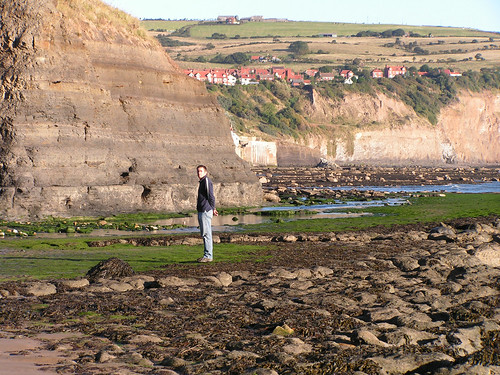
Swiped directly from Living Geography;
"... teachers are, first and foremost, public intellectuals. They really do need to 'know' something worthwhile, relevant and enjoyable to teach. That is why teaching is a graduate profession. Teachers need to have learned something, and in a dynamic subject like geography they need to keep learning."
Tuesday, February 24, 2009
Something called "volcano monitoring"
That is why Republicans put forward plans to create jobs by lowering income tax rates for working families...cutting taxes for small businesses ...strengthening incentives for businesses to invest in new equipment and hire new workers...and stabilizing home values by creating a new tax credit for home-buyers. These plans would cost less and create more jobs.(emphasis mine)But Democratic leaders in Congress rejected this approach. Instead of trusting us to make wise decisions with our own money, they passed the largest government spending bill in history - with a price tag of more than $1 trillion with interest. While some of the projects in the bill make sense, their legislation is larded with wasteful spending. It includes $300 million to buy new cars for the government, $8 billion for high-speed rail projects, such as a 'magnetic levitation' line from Las Vegas to Disneyland, and $140 million for something called 'volcano monitoring.' Instead of monitoring volcanoes, what Congress should be monitoring is the eruption of spending in Washington, DC.
My guess is that cost him the vote, should he decide to seek the Republican presidential nomination for the 2012 elections, of much of southern Alaska, Washington, Oregon, and Northern California, and perhaps Hawaii too.
The towns southeast of Tacoma and Seattle, in Washington, are immediately downflow of Mount Ranier, and would receive the brunt of its mud, at the very least. Many towns in that area lie on existing mudflow. Monitoring the Cascades and other American volcanos protects western American cities as much as monitoring Atlantic weather protects southern and eastern cities.
Science really is important, and it worries me when it's brushed off as "something called 'volcano monitoring'," when it's treated like an elitist hobby. Americans can do it -- but not without good hard science.
(edited to add: Geologist Maria Brumm added the fiscal element: "I wish I'd thought of that.")
Lilly the map kid
Monday, February 23, 2009
Well, rats
After his recent presentation to the Utah Geographical Society, he gave Brad a copy of "A Geolinguistic Handbook," engraved on the cover with "Brad R. Dennis, Geographile."
They ask at the end:
- Name the 10 largest countries.
- Name the 10 smallest countries.
- Name the 10 longest rivers.
- What are the new names of these countries: British Honduras, Dahomey, Upper Volta, Cambodia, Basutoland, Ellice Islands, Northern Rhodesia, Rhodesia, Congo, Dutch Guiana.
(They also answer those questions.)
A close one ...
GIS software recommendations needed.

Sparks 2008 APS Poster - "Regional predictions of potato late blight risk in a GIS incorporating disease resistance profiles, climate change, and risk neighborhoods"
Originally uploaded by earlycj5.
(The poster is about potato blight. This is not related to cause of death.)
The Cinematic Geography of the Los Angeles area
I don't think Fox Plaza really blew up. There are a lot of reasons I wouldn't choose to live in Los Angeles. The first time I ever drove there, I had to find a friend's house in Hollywood at 1 am, I'd been driving only a few months, and her directions failed because 101 through Hollywood was closed for a movie filming. I had to make my way through city streets, without a map, without google maps on my Treo, hoping for the best, not knowing where I could stop safely. Fortunately, my habit of reading maps for fun gave me a basic understanding of LA geography and where I was headed, and my sense of direction and knowledge of main streets took me right to her apartment -- only two hours late.
Sunday, February 22, 2009
Saturday, February 21, 2009
Festival of Linkage
Also:
The USGS feed on LiveJournal just exploded out a bunch of old link summaries, but there's some fascinating stuff there. Have a peek: http://syndicated.livejournal.com/usgsnews/ You don't need a LiveJournal account to read it.
Geography of American Elections
These five nearly two-hour lectures from Stanford University explains the role of geography in the recent United States elections. They were filmed through October and November 2008, just before and after the recent Presidential elections, in which American voting patterns of recent history were shaken up unexpectedly.
Intro:
Lecture 1:
Lecture 2:
Lecture 3:
Lecture 4:
Lecture 5:
Friday, February 20, 2009
The importance of geographic literacy
(four-minute video)
Springtime for Greenland
First thoughts:
1. Do we have data on melt from a decade ago? from the early 70s? How much has it changed? There had to be some surface melt back then, or the winter snow would be thickening the ice cap every year. I'm sure they know how and why it's worse and scarier now.
2. I'm not fond of heights to begin with, and of abysses in general. I couldn't have hung from those ropes.
3. I was a bit annoyed by Dr. Box saying, "It's just bottomless. No light escapes." Was there some sort of light source at the bottom of the hole that light should be escaping from? But I sort of get what he means, his choice of words just didn't work for me. It's so deep and narrow that it goes black immediately, and once you're down there, you're down in a deep black pit, ice water all around you, battered by ice on all sides, and you're going to die.
I'm one of those people who believe our climate is changing, and that most, but not all of that change, is human-caused. Humans can adapt, but I think we'll lose a lot of biodiversity, like emperor penguins, polar bears (do I really need to link those stories?), and any plants and animals that already live at extremes of height or heat, whose habitats will change beyond their ability to adapt. In addition, animals that could move to adapt will be blocked by human change -- long, narrow reservoirs in Canada, cities and highways and farmland elsewhere in the world.
We can't stop it. We can slow it if everyone works together, but everyone isn't -- and not everyone can. But I think the winds are changing, and we'll get there. There will be certain losses, and certain sacrifices, but we're finally hitting the brakes a bit, and we'll get there.
I'm a little glad for Greenland in the short term. They had some decades of being green a millennium ago, with dairies and farms. I hope they can make use of climate change to help themselves, for the time being.
Thursday, February 19, 2009
The joy of cephalopods
Look at the smiles on David Gallo's face, and in the audience. Listen to them gasp. Oh, amazing. I can't eat octopuses or cuttlefish, and I think I might be off squid now, too -- what amazing creatures these are.
Wednesday, February 18, 2009
solar eclipse from the moon
http://www.kaguya.jaxa.jp/en/communication/com_information_e.htm#NEW_20090218A
(After I originally posted this, my husband pointed out a simple oversight on my part -- From the moon, this would be a solar eclipse, as the earth is occulting the sun. Were the people orbiting the moon seeing the moon's shadow on the earth, with the sun behind, that would be a terrestrial eclipse.)
It's more complicated than that
This is a long video, nearly half an hour, about someone who was there at the time. I think it's important.
Tuesday, February 17, 2009
Geographers do it better?
From MIT:
In informal conversations in the Geography Department at UCLA, we began to ask ourselves if the biogeographic theories we use every day -– theories that predict how plants and animals distribute themselves over space and over time –- employed in conjunction with publicly available satellite imagery, could shed some light on this question. The outcomes of this musing, presented below, are our thoughts and experiment. By bringing these methodologies to bear, it is our hope that a long overdue debate might bring bin Laden back to the fore of the public consciousness – and possibly to justice*.
I find this sort of geography fascinating, but I also can't imagine wanting to do it.
*PDF article
Monday, February 16, 2009
Tokyo under grass
 Me, I'm not that fond of so much lawn, if critters aren't eating it. I'd like to see half that much lawn, a whole lot of edible landscape, and perhaps native plants to attract wildlife -- but I'm a bit of a nutcase.
Me, I'm not that fond of so much lawn, if critters aren't eating it. I'd like to see half that much lawn, a whole lot of edible landscape, and perhaps native plants to attract wildlife -- but I'm a bit of a nutcase. 
Sunday, February 15, 2009
Drought In California
This is a fierce drought, we're working our way into the third year of not-enough-water. The snow is shallow in the mountains, and that snow is our biggest reservoir. Folsom Lake, Lake Oroville, Lake Shasta, all are low, marinas are high and dry, because we haven't had enough rain and snow, our water's being shipped all over the state, including to rice farmers in the northern valley (when, in good years, rice growing replicates normal valley flooding, but in dry years, uses a lot of extra water) and to the west side of the lower San Joaquin Valley, where water-hungry crops grow on poor soils in near-desert.
Our population is growing, our climate is drying -- we do not have enough water.
It has been pouring, and the snow levels are low. It can continue to pour. I am fine with it.
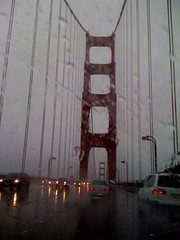
More images here.
That's great, it starts with an earthquake, birds, snakes, an aeroplane. Lenny Bruce is not afraid.
Saving power by saving water -- win/win for California
We spend so much electricity shipping it around the state and drawing it up from the ground that using less will save power.
From WorldChanging at The Guardian:
The virtues of water efficiency can be found in California and China - regions where water shortages have become emergencies and droughts may worsen with climate change. Conditions may become more severe in the future as consumers turn to water solutions that often require even greater energy supplies.
In California, where drought is afflicting the land for the third year in a row, the state is reducing water deliveries by 20-30 percent this winter and warns of "the most significant water crisis in its history." The water shortages are forcing farmers to cut production and lay off employees in an already sour economy.
Meanwhile, water transportation, storage, and treatment account for about 19 percent of the state's electricity, according to a 2007 California Energy Commission report [PDF]. To reach the rapidly expanding urban clusters in southern California, for instance, water is pumped 2,000 feet (610 meters) over the Tehachapi Mountains north of Los Angeles.
Mind you, hydroelectric dams create electricity -- but that won't be reduced as we use less. And as the Sierra snowpack melts away with climate change, we will likely lose most of that reservoir, the snow itself, and have to find more ways to store water in our (ostensibly) wet winters to have enough to last us through our dry, dry summers. We'll either have to build a lot more dams, or find other ways to get (and save) water, and to generate power.
California's population is burgeoning, as well. We will, as a whole, want more water, not less, in future years -- and more power. By cutting back now -- growing dry-climate and native gardens, using landscaping water to grow our own climate-adapted food rather than lawns and privet hedges, moving California's crops into areas better suited for them, controlling water use in new developments, and other water conservation measures -- we can use less of the inevitable additional water, rather than more.
(Photo from Aquifornia)
Saturday, February 14, 2009
Friday, February 13, 2009
650 Million Years in 1 Minute and 20 Seconds
650 Million Years in 1 Min. and 20 Sec.
(Found on Matt's Geography Blog.)
Tuesday, February 10, 2009
Kids and the Ocean

photo Solitary Islands Marine Park
The Ocean Doctor continues on his quest to share the wonders of the ocean and its exploration and conservation with children all over the western hemisphere. His travels this year have brought him to South Dakota, Missouri, and Cuba. But he can't do it all without help. That much airfare, traveling food, and time off really add up.
If you can throw just a dollar or a bit more in the tip jar to help this science educator bring the ocean to children thousands of miles away from it, either literally or figuratively, please do. Check out his blog, see what he's doing, and find a way to help.
Thanks.
(the photo is not the Ocean Doctor -- I should ask him for a photo I can use, hm.)
Tuesday, January 27, 2009
Orphanage Bon Samaritain [03] Croix-Des-Bouques, Haiti
Instead of encouraging your citizens to make more babies in an overpopulated world, why not support healthy orphanages and education in impoverished countries, advocate ethical adoption of people from those places by your own people, fight racism at home, and thereby change the shape of your own demographics (so there will be young people to support your currently aging populations) without increasing global population?
Sure, it will dilute your racial stocks, but culture is learned, and you can raise a baby from Somalia or Bangladesh or Peru in your native cultures just fine.
Mary
Sunday, January 25, 2009
Rekindling the spark
To celebrate his 50th birthday and awaken wonder about the ocean in children across the country, he intends to visit at least one school in each of the fifty states and the territories of the US to offer presentations, free of charge.
By inviting media and the extended communities of each school into the conversation, and encouraging the schools he visits to connect with each other, he plans to engage young people to develop the same energy students offered during the initial decades of the space program.
He's doing this on his own, but happily welcomes donations from folks who want to help send him on this journey of discovery. I hope it will be fruitful, fulfilling, and exciting for the kids, teachers, and communities -- and also for The Ocean Doctor himself.
More information (and the link to donate) is at The Ocean Doctor's own website.
Thursday, January 22, 2009
nobody living can ever stop me
Now, it's my all-time favorite patriotic song, and one of my favorite songs all together. There's an illustrated version for all six verses, I've given it to friends of all ages. But seeing Pete Seeger sing it, at nearly 90 years old, sent the tears pouring down my face.
Thursday, December 25, 2008
Atlas of the Biodiversity of California
(I'll review it later. First, I need to curl up in bed with a cup of tea and maps and photos and diagrams and geographic information.)
Wednesday, December 17, 2008
whoops!
Drillers accidentally hit a pocket of molten rock underneath a working geothermal energy field in Hawaii, a lucky break for geologists that could allow them to map the geological plumbing that created everything we know as land.
The unprecedented discovery could act as a "magma observatory," allowing scientists to test their theories about how processes transformed the molten rock below Earth's surface into the rocky crust that humans live on today.
I can imagine the drillers: "Whoops!" then the scientists: "Oh wait. Cool!"
Tuesday, December 16, 2008
AGU day 2 - no less tired
Or not. Because today, the exhibition hall was open, and boy oh boy, your tax dollars sure pay for swag. Do I need an image of the whole planet, as an anaglyph ("3-D"), complete with the viewing glasses? Define "need." I now have one. There are posters, and bookmarks, and postcards, and bound/published studies, and so much interesting stuff. I tried only to pick up free stuff I really, um, needed. So far, I've completely avoided all the book publishers, even the one that's half-price just for the conference, even though they have really, really neat stuff. So far.
This morning I attended a talk on challenges in California due to climate change, specifically why we're so fragile here, how our "perennial" agriculture (tree crops, grapes) will probably change and adapt, and mitigation and planning for sea level change in the San Francisco bay area. I know not everyone would say, "Wow, it was so interesting," but of course it was. I missed a presentation earlier this afternoon because of the information and sensation overload of the exhibition hall, and the rest required afterward, but am attending a presentation later today on "Science Issues for a New Congress and a New Administration." Then I think I'll call myself whupped, and head for home. Tomorrow is another day.
Monday, December 15, 2008
overwhelming - AGU Fall Meeting
I love that I can hear languages from all over the world here, lots of Italians, also Russians, Germans, Koreans -- from what I've heard so far.
They've divided the sessions into four different locations within a two-block radius from one another, all posters in one big hall, booths in another, speakers upstairs from that, other presentations -- films, meetings, etc. -- into that.
It's actually very exciting, but again, I'm overwhelmed and though not quite out of my element, definitely still on the outskirts of it, working my way in.
( Maria: I actually hit the education posters for the morning right before I sat down and read your response to my last post. It's the direction I'm heading, I think, and I knew I'd be interested. Wish you were here! Thanks! )
Sunday, December 14, 2008
2008 AGU fall meeting -- tomorrow morning!
I'll blog, but I'm not sure how yet. I can either figure out how to mobile blog to this journal from my phone and do lots of small entries, or (and this is more likely) just use twitter a lot, and phone pictures to flickr or twitpic, and take pictures with my regular camera for later, then once or a few times over the course of the week, amalgamate those into a proper entry. Or maybe I'll do both. Do you have a preference?
Is there anything you'd specifically like me to explore, photograph, or write about for this blog, from the AGU meeting?
If not, my posts are likely to make it clear that I'm running around like the proverbial kid in the candy shop, licking everything and putting it back.
If I see the "seismologists are sinners" guy, I'll get a picture of him.
Sunday, December 07, 2008
Fun With Flickr

Rural school girl, San Augustine County, Texas (LOC)
Originally uploaded by The Library of Congress.
Some of the comments:
Man, look at French West Africa and French Equatorial Africa. I also see the Belgian Congo and the Union of South Africa.
Note the horn of Africa and the small country in northern Somalia. That's British Somaliland, which joined French Somaliland in 1960 to form Somalia. In 1991 when the civil war started, the old British Somaliland declared independence and has since maintained a stable, democratic government while the rest of the country languishes in an endless civil war. So far, no country except Ethiopia has recognized Somaliland, though there are rumors that recognition may be comming.
Note also that Burma (Myanmar) is part of British India. This may be an old map, I think the British had separated Burma by this time (though independence did not come until the late 1940's.) Burma had never historically been part of India and many Burmese were enraged when the British made it part of their Raj after overthrowing the monarchy in the 1880's.
Some of the notes:
"One Korea, spelled "Corea", and colored like Japan"
"Germany includes Austria, borders Italy"
"Ireland entirely part of Britain"
"French Indochina (no Vietnam, Cambodia, or Laos)"
"Manchuria (Manchukuo), Japanese puppet state"
"Note the horn of Africa and the small country in northern Somalia. That's British Somaliland, which joined French Somaliland in 1960 to form Somalia. In 1991 when the civil war started, the old British Somaliland declared independence and has since maintained a stable, democratic government while the rest of the country languishes in an endless civil war."
Friday, November 14, 2008
Bas Relief, American Geophysical Union (Washington, DC)
I had to answer the hardest question in the world.
It said, "Area of scientific interest: PICK ONE"
ONE????
*explode*
Saturday, September 27, 2008
The geology of clafoutis
Please check out this post about the geology of clafoutis. It also touches on important issues such as pancake domes on Venus.
It is wonderful and makes me squee.
Thank you,
Mary
Thursday, September 25, 2008
eater of time
Our measurement of time is based on geography, and our knowledge of geography is based on time.
See?
Friday, September 12, 2008
boom de yada
In India the other day, a young girl, distraught with fear that the world was ending when the LHC turned on, killed herself. She died, because she didn’t understand the truth.
Now that site is less funny, isn’t it? All over the world, in all different countries, people are raised to believe in superstitious nonsense, and raised to believe with all their hearts that it’s real.
And when we do that, we do far more than remove people from reality. We leave them vulnerable to all manners of nonsense, from believing in fairies to truly and honestly thinking the LHC will destroy the planet. People don’t learn how to think critically, and then they drink homeopathic water instead of taking real medicine, they chelate their children, or they deny their children vaccinations. And when that happens, people die. Children die.
I am a bit of a skeptic. I believe in science, I disbelieve in the supernatural. For non-traditional medicine, etc. I don't mind some anecdotal evidence, but I like to see science, I like to see things investigated. Sometimes the traditional stuff holds water, sometimes it doesn't. Acupuncture is showing actual results for a lot of conditions its used for (uterine support in conception/pregnancy, pain relief for chronic conditions, etc.) in scientific trials. Homeopathy hasn't held up as well.
In school and at home, when we don't teach children to think critically, when we don't ask them what they think will happen or why something happened, and when we don't give them the tool of questioning supposed experts, we fail them. They grow up assuming that the flash-illuminated, out-of-focus dust specks in the camera are ghosts, and don't buy the house they otherwise wanted, because they don't want to live in a haunted house. They make day-to-day decisions based on ancient, disproven myths. They miss out on timely medical help.
They don't question scientists when scientists should be questioned, it's integral to the process. Or they ask the wrong questions.
One reason I'm in this field is because I love the earth, I love the universe, and I don't need to have the world be supernaturally magickal to love it, there's enough magic in the natural. One reason I am in this field is to pass that on to children, with the tools to think about it rationally.
Saturday, September 06, 2008
Hurricane Hanna can cook
"Hanna produced tropical storm force winds and heavy rains across the U.S. Gulf Coast. In all, [Hanna] left $20.3 million dollars in damage and three deaths.
"Despite the damage, the name Hanna was not retired and is on the 2008 list."
http://www.nhc.noaa.gov/aboutnames.shtml
Friday, September 05, 2008
I think there may have been an earthquake
When you do that, among the questions is, "How did you respond?" You can choose between "No answer/don't remember," ""Took no action," "Moved to doorway," "Dropped and covered," "Ran outside," "Other." I mentioned to my partner, "They're missing one." He said, "Run to the computer and look up the quake on the USGS site?" "YES!" So I chose "other," and told them we ran to the computer, and that I thought from how it felt that it wasn't on the Hayward fault (it wasn't, it was on the Calaveras), and that I thought it was a 3.2 or so. Then I saw how deep it was and said, "That's pretty deep, it was probably a 4 or so." And bingo, I nailed it. I used far fewer words to explain this to the USGS.
(If you actually want to read the text in the image, which is a twitter-and-other-things friendfeed screenshot of folks responding to the quake, VIEW BIG.)
Thursday, August 28, 2008
Along the Kosi
Satellite pictures
Where the rivers flow, and where harbors lie, is a major driver in human geography.
This is a very, very big deal.
(Only somewhat orthogonally, I'm reminded of John McPhee's description of the Atchafalaya's attempt to reclaim the Mississippi's water, in Control of Nature (how lucky we are that the New Yorker has archived that story for us), and how now, the US Army Corps of Engineers can't let the patterns of history, the switching back and forth of the main channel between the two rivers, continue, or it will leave New Orleans without its water highway.)
I don't think entropy's going to let us get in its way.
Tuesday, August 12, 2008
Mars on Earth
Flickr feed
Twitter feed
Oh: And these are my friends Sarah and Sarah. I envy the heck out of them. Sarah's knitting.
Thursday, August 07, 2008
Layers
(A propos of completely nothing, at this point, I'd moved from Berkeley to Sacramento a few years previously, and yet, the snow-covered woman who walked in was an acquaintance of mine from Berkeley whom I hadn't seen in at least four years.)
I had a brilliant Geography 1 teacher, whom I keep meaning to write about, who got us excited about stuff like knowing how to forecast weather from observations, because he did, and now I've mostly forgotten the skill for lack of practice. I feel like I should go out into the country for a month and just pay attention. The bay area is actually painfully simple: It will be foggy and clear up, or it won't. If it does, the temperatures will rise; if it doesn't, they won't. It won't rain (much at all, sometimes some spitting) in the summer. In the winter, if it's cloudy it will probably rain, and probably quite a lot. If it's not, it won't. It's hard to see enough incoming weather to really forecast it, and it's often hard to see past the low fog to anything going on in the upper sky. Of course, I could always visit Wunderground, but that misses the point.
I need to get my body out there paying attention again.
Monday, August 04, 2008
The East Bay hills from Coyote Hills
On this, the eastern side of the park, there has been huge fuss about development. How close can the houses come to the park? Just to the southeast of these houses, less than a quarter mile away across the road, is a big business park full of half-occupied buildings built just before the dotcom boom of the late nineties crashed. Not much farther away are condos and new subdivisions. Where will the wastewater go?
When I first visited Coyote Hills, Gerald Ford was in his waning days as president. It was hot that day (by bay area standards) and very windy, and there weren't big roads around here. There was no big highway 84, the Dumbarton Bridge was still a water-level toll bridge, and we rode our bikes from the very western side of Newark all the way up to around around the Coyote Hills, where there was almost nothing at all. It was hot and windy and I was out of shape and exhausted. It colored my experience of those hills so strongly that I resisted going back until about 1998, when I moved to the Fremont area, and re-discovered them.
I love them now, their bird life and the muskrats and the sunset view, and how the Coyote Hills are what remains of ancient mountain ranges, and are (along with the related Albany Hill) among the oldest hills in the bay area.
The houses on the hill in the far distance weren't there, when I first visited. Parts of the east bay hills are still getting paved over with streets, and houses are being sprinkled here and there, but mostly, the remaining hills are part of our green belt tradition, and I work to protect that, too.

